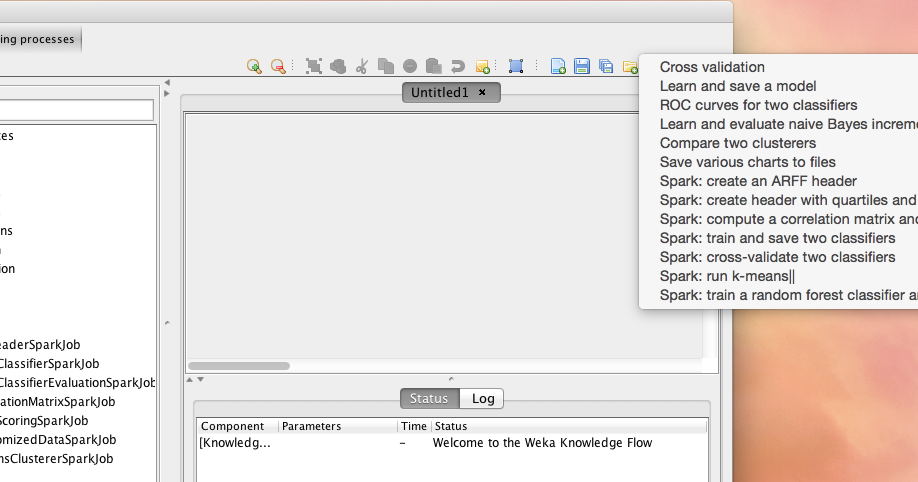
If you like GeeksforGeeks and would like to contribute, you can also write an article using or mail your article to See your article appearing on the GeeksforGeeks main page and help other Geeks. One must have an absolutely clear understanding of it.
Weka jar import classpath how to#
One should know how to set a classpath if not done after configuring JDK in respecting operating systems in order to see it or to it and play with multiple IDE, versions game altogether. Similar for jar, if you create a jar and mention its path in the variable, the VM will look inside the jar file and find the class. We’ll specify only the directory dir in our classpath variable, as the rest information regarding the path is provided by the import statements. The complete path of the Menu class file would be dir/org/company/Menu.

Let’s say the above package resides in the directory dir. We put directories and jars in the CLASSPATH variable. Thus, using the CLASSPATH variable we provide it the place where we want it to look. It is impractical for it to go through every folder on your system and search for it. Now, how will the JVM know this location? The JVM knows where to find the class Menu. All the classes listed here are imported or if we want to import a specific one then do use it as stated below. Unless otherwise noted, passing a null argument to a constructor or method in any class or interface in this package will cause a NullPointerException to be thrown. This package provides for system input and output through data streams, serialization, and the file system. Output I/O classes are imported from java.io package Such that when we call the below command as follows: Menu menu = new Menu() What does this import mean? It makes the Menu class available in the package org.company to our current class. Here we will be discussing the responsibility of the CLASSPATH environment variable while programming in Java as we move forward we for sure short need usage of importing statements. Packages can be considered as data encapsulation (or data-hiding). A default member (without any access specifier) is accessible by classes in the same package only. A protected member is accessible by classes in the same package and its subclasses.

Making searching/locating and usage of classes, interfaces, enumerations, and annotations easier.For example, there can be two classes with the name Employee in two packages, and .Employee Package in Java is a mechanism to encapsulate a group of classes, sub-packages, and interfaces. Split() String method in Java with examples.Access and Non Access Modifiers in Java.Association, Composition and Aggregation in Java.Dynamic Method Dispatch or Runtime Polymorphism in Java.How to swap or exchange objects in Java?.Different ways to create objects in Java.

Access specifiers for classes or interfaces in Java.Access specifier of methods in interfaces.Difference between Abstract Class and Interface in Java.File Handling in Java with CRUD operations.ISRO CS Syllabus for Scientist/Engineer Exam.ISRO CS Original Papers and Official Keys.GATE CS Original Papers and Official Keys.


 0 kommentar(er)
0 kommentar(er)
